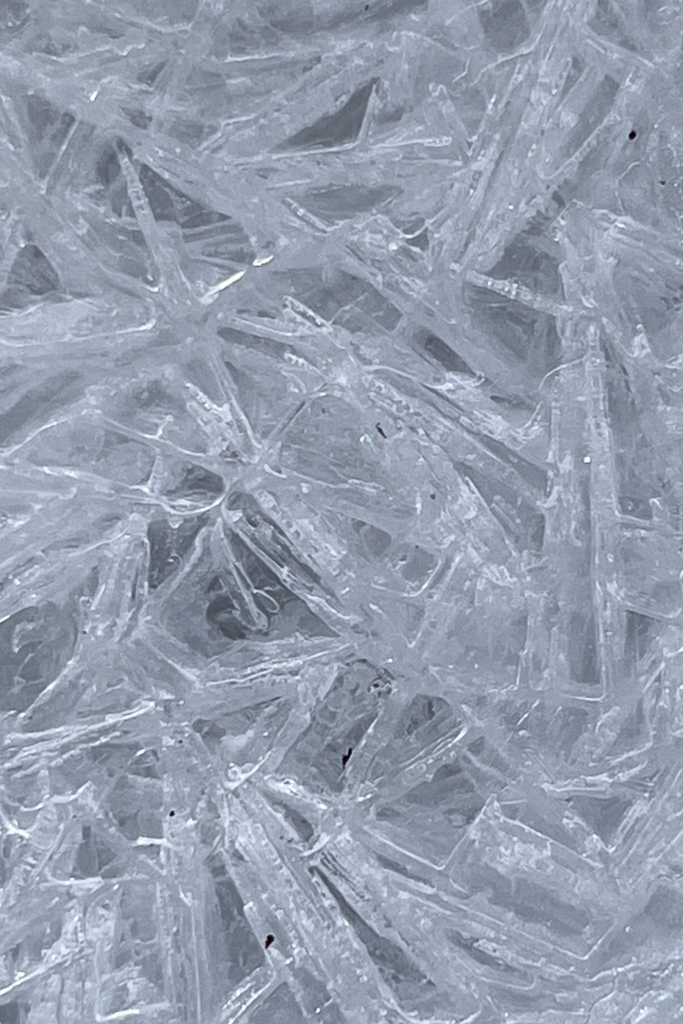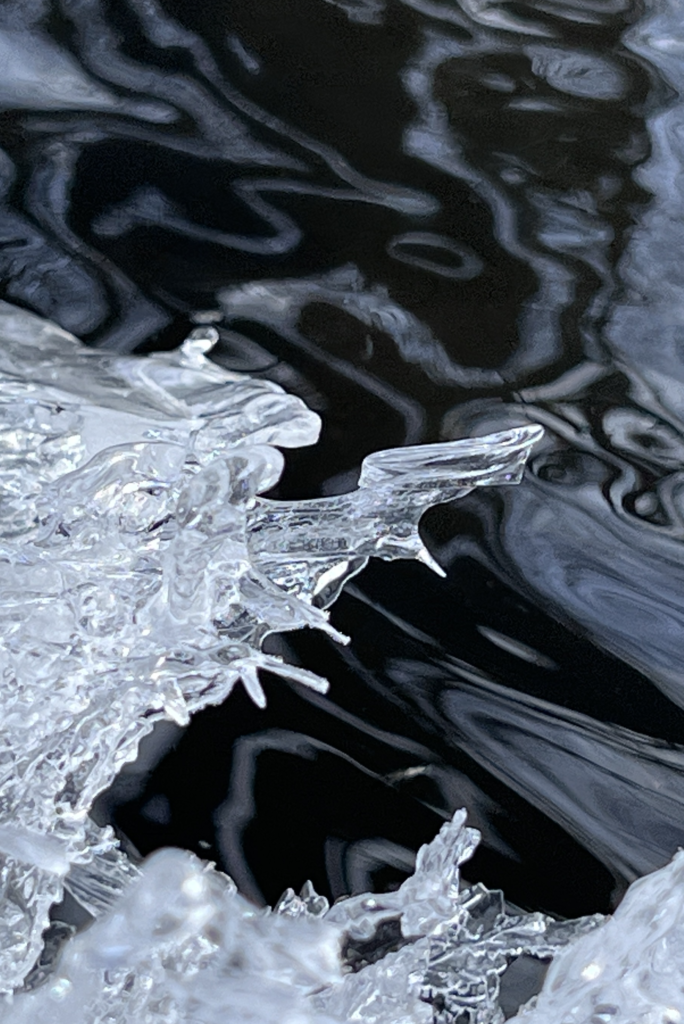19 February 2024
After a long unusually warm period, we’ve had a brief period of cold and snow. The creek is still flowing free in most parts, and ice is mostly opaque white granular frozen shelves that protrude from either bank. However, there are areas where recrystallization has occurred, often, though not exclusively, under bridges, and often, though not always, showing signs of melting/refreezing.
Here we can see melting refreezing, with the fine-structure of the crystals erased, and only the large acicular macro-crystals visible.


Something else that interests me is that many of the masses of crystal, both refrozen and ‘fresh,’ have lots of empty space in them. You can see that a little in the image on the upper left; it is more visible in the photo just below. In a book I’m reading, Above the Trees, about the alpine tundra environment, it describes how sheets of ice form across the tops of small depressions, which then act as miniature greenhouses, warming the air below them. I wonder if heat rising from the flowing water is likewise trapped by the panes of ice above them, forming these honeycomb patterns of ice and air.
Sheets of ice, and the acicular crystals, often seem to me at an angle to the surface of the water of about 10-15°. On possibility is that the water in the deeper part of the creek is warmer, and so that there is a temperature gradient that affects the level at which ice crystals grow over the water. I think, but am not certain, the the ice crystals on either bank of the creek angle away from the water as they project out over the stream.

Finally, although much of the ice is refrozen, there appear to be areas of fresh crystals, or at least crystals that still show fine structure on the surface. One of the images below (right) is from under a bridge, where I would expect it to be cooler and sheltered from the sun, but the other (left) is from a more normally exposed area of the creek.


The image shown on the left is particularly interesting because it retains a lot of fine structure — etchings and dendrites — on the crystals. More detail below.
